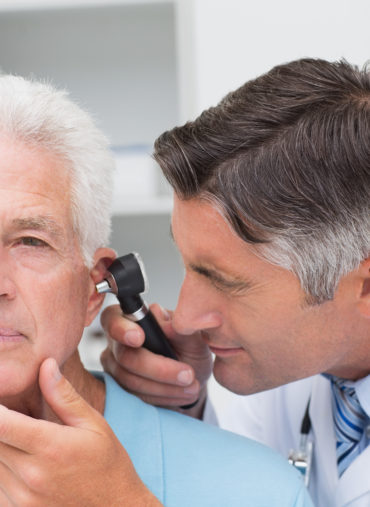5-YEAR RESIDENTIAL MEDICAL TRAINING PROGRAM
FUNCTIONAL NEUROANATOMY (Neurophysiology)
- Neurons: body and extensions; functional classification; synapses (excitation and inhibition); action potential and nerve impulse propagation. Somatic neuromuscular transmission and visceral endings. Receptors: classification and functions.
- Glia, envelope cells y satellites:structure, classification, and functions.
- Segmental medullary system: components and functional organization of the afferent, intercalated and efferent sectors.
- Brainstem segmentation: components and functional organization of the afferent, intercalated and efferent sectors.
- Reflexes of the segmented nervous system: physiology and biological and clinical importance (Muscular stretching; flex or defensive; cutaneous; vasomotor; bladder; respiratory; cough; swallowing; vomitive; corneal; photo motor and consensual; accommodation; carotid and aortic sinus).
- Cranial nerves: specific functions, nuclei, pathways.
- Special receptors: olfactory, visual, vestibular, auditory, and taste. Structure and pathways. Specific functions.
- Corticospinal projection system: structure and pathways. Functions.
- Somesthetic systems of the head and body: structure; pathways; functions. Dermatomes and their relation to medullary and vertebral levels.
- Quadrigeminal laminal(tubercles): structure and functions.
- Cerebellum: structure and functions. Pathways. Blood circulation.
- Basal nuclei (ganglia): structure, functions, pathways, blood circulation.
- Thalamus: structure and functions. Pathways. Blood circulation.
- Hypothalamus or Pituitary: structure and functions, pathways, blood circulation.
- Limbic system: components and functions. Pathways.
- Autonomic nervous system: structure and functions.
- Cerebral cortex: structure and functions. Association, commissural and projection pathways. Afference. Functional relationships with other structures of the CNS.
Localization of functions by cortical areas and by hemispheres.
Functional coordination of both hemispheres.
Blood circulation of the brain.
Human intelligence: thought, memory and emotions.
- Medulla: structure and functions. Ascending and descending pathways (tracts). Blood circulation.
- Nerve plexuses and peripheral nerves: structure, functions.
- Normal movements and stability of the spinal column: concept and structures on which they depend.
- CSF: function, circulation, and reabsorption. Functions.
KNOWLEDGE OF SURGICAL ANATOMY
(Nervous, visceral, bone, muscular, vascular, ligament and skin elements to be taken into account in these pathways; their topographical location and transoperative protection. Note: surgical pathways, not surgical techniques).
- Anterior cervical region: pathways to the lower cervical cord (C3-7), the scalene muscles, and the brachial plexus.
- Posterior cervical and lumbar regions, pathways to the canal.
- Parasellar region: pathways to the pituitary gland, the supraclinoid internal carotid artery and its proximal branches, the lesser sphenoidal wing, the middle and anterior fossa of the cranial base, and frontal, front lateral, frontotemporal, frontopterional, and temporobasal craniotomy techniques, etc.
- Microanatomy of the pituitary gland and its relationship with the a. internal carotid artery and its branches, with the cavernous sinus and with the sella turcica, the sphenoid sinus and the optic chiasm.
- Microanatomy of the a. supraclinoid carotid artery and its branches (includes segments A1 and A2 of the anterior cerebral artery and M1 and M2 of the middle cerebral artery) and its relationship with cranial nerves II and III.
- Microanatomy of the vertebrobasilar arterial system and its main branches (includes segments P1 and P2 of the posterior cerebral artery) and their relationships with cranial nerves III and IV.
- Microanatomy of the incisura.
- Cerebellopontine angle: microanatomy; access routes to the cranial nerves in their cisterns and to the cranial base in the lateral posterior fossa.
Suboccipital retro mastoid, trans tentorial sub temporal, combined supra and infratentorial craniotomy techniques, etc.
- Posterior midline fossa: access routes, craniotomies.
- of the lateral ventricle and III ventricle and access routes.
- Microanatomy of the IV ventricle and access routes.
- Orbit and its content: topographic anatomy, access routes.
- Craniospinal region: topographic anatomy, ant. and post. routes.
CLINICAL KNOWLEDGE AND SURGICAL THEORY
- Congenital diseases, malformation, and inherited degeneration(with special interest in those that may require surgical treatment): a) malformations with neural tube closure defect (cranium and spinal cord, brain and myelomeningocele, skull and spina bifida, pilonidal cyst, Arnold Chiari malformation); b) bone malformations with repercussions on the NS (Basilar impression, platybasia, craniosynostosis, Crouzon craniofacial dysostosis, hyperostosis frontalis, Albers-Schonberg marble bone disease, thoracic outlet syndrome, spinal canal stenosis, spondylolysis); c) syringomyelia / syringobulbia / hydromyelia; d) phacomatosis; e) spinocerebellar hereditary degenerations; f) amyotrophic lateral sclerosis; g) congenital general paralysis. NOTE: in lesions of this type that are most frequently admitted for surgical treatment, such as: myelomeningocele, syringomyelia, Arnold Chiari, basilar impression, congenital canal stenosis, craniosynostosis, quadrilateral space syndrome; diastematomyelia and dermal pore (brain or spinal cord), delve into the variations, pathophysiology, clinical pictures, diagnosis and surgical treatment techniques.
- Cerebrovascular diseases: a) classification, etiology, pathophysiology, topography, clinical pictures, diagnosis; b) criteria for surgical treatment in obstructions of carotid artery in the neck or its intracranial branches or the spinal cord artery and general principles of surgical techniques; c) criteria for the use of extra intracranial arterial anastomoses; d) aneurysms: classification according to site of origin, size and etiology; e) criteria for surgical treatment and preoperative prognostic classification of patients with intracranial aneurysms; f) variants of intracranial treatment techniques (occlusion with clips, ligation, reinforcement, entrapment, promotion of thrombosis, intra-arterial occlusion, etc.) and extracranial treatment (ligation of the carotid artery in the neck, antifibrinolytics, etc.); g) main routes and techniques for the surgical approach to aneurysms of the carotid and vertebrobasilar arterial systems; h) pre, trans and postoperative complications (iatrogenic or not) in patients with aneurysms; i) pathophysiology, prevention and treatment of rebleeding and vasospasm; j) arteriovenous malformations: classification, extra- or intra-arterial treatment methods, k) criteria for surgical treatment of AVMs; l) general principles of surgical technique; m) non-traumatic cerebral hemorrhage (intracranial hematoma): causes, criteria to decide on surgical treatment and surgical techniques; n) carotid-cavernous fistula: pathophysiology, clinical picture, diagnosis, treatments and criteria for its use.
- Cervicobrachial syndrome: a) etiology; b) pathophysiology in injuries to the intervertebral disc and other vertebral or ligamentous elements; c) clinical pictures and diagnosis; d) non-surgical treatments; e) surgical treatments: ways and criteria to use them, with or without implants, with or without osteosynthesis; f) techniques in the anterior and posterior routes; g) differential diagnosis.
- Non-traumatic spinal cord diseases: Non-traumatic spinal cord diseases: a) etiology, pathophysiology, clinical pictures, topography, diagnosis; b) paraplegias of acute installation and concept of spinal shock; c) slow-onset paraplegia, paralysis due to upper or lower motor neuron disease; d) myelitis; e) sick vascular: infarction (myelomalacia), AVM, hematomyelia and hematorrachis; f) cervical spondylotic myelopathy: criteria for surgical treatment, techniques and complications; g) myelopathy due to other diseases, degenerative or inflammatory vertebral ligamentous with canal stenosis; h) spinal cord neoplasms: histological and topographic classification, criteria for surgical treatment and surgical techniques.
- Infections of the NS: a) etiology and routes of infection, pathophysiology, clinical pictures, topography, diagnosis and clinical or surgical treatments; b) pyogenic: bacterial meningitis, extradural or brain abscesses; c) viral: acute anterior poliomyelitis, herpes zoster ganglionitis, meningitis and encephalitis; d) mycotic: torulosis; e) by rickettsia, protozoa and worms: toxoplasmosis, amoebic meningoencephalitis, cysticercosis, trichinosis; f) neurosyphilis; g) cover sepsis: osteomyelitis, granulomas and abscesses; h) differential and positive diagnosis between acute polyneuritis of Landry-Guillain-Barré syndrome, paraneoplastic, toxic or deficiency polyneuropathies and compressive myelopathies.
- Neuralgias: trigeminal; glossopharyngeal; postherpetic; occipital; carotidynia; atypical facial pain; intercostal; of the brachial plexus (Note: sciatic neuralgia is dealt with in another section) a) etiology; b) pathophysiology; c) clinical pictures; d) topography; e) diagnosis; f) clinical (drug) treatments; g) methods of blockade or neurolysis of the ganglion and peripheral nerve branches; h) criteria for surgical treatment; i) surgical treatment techniques, especially for neuralgia: trigeminal (towards peripheral branches, ganglion, roots, tracts or nuclei), glossopharyngeal, intercostal and brachial plexus j) concept and surgical technique of neurovascular decompression.
- Facial nerve (peripheral paralysis and hemifacial spasms): a) anatomical-clinical classification; b) etiology; c) pathophysiology; d) topography; e) clinical pictures; f) diagnosis; g) clinical treatments; h) criteria for surgical treatments; i) surgical treatment techniques.
- Brain and spinal cord injuries in children: a) pathophysiology; b) clinical pictures; c) diagnosis; d) prognosis; e) treatments; f) complications.
- Hydrocephalus in children: clinical picture, diagnosis, and treatment.
- Malformations of the NS or its coverings in children: a) classification b) clinical treatment; c) surgical criteria and techniques.
- Neoplasms of the CNS or its coverings in children: a) anatomopathological and topographic classification; b) general clinical treatment; c) specific non-surgical treatments; d) surgical treatment: indications, routes, and techniques.
CLINICAL KNOWLEDGE AND SURGICAL THEORY
Arachnoiditis, arachnoid cysts, epiduritis: a) causes; b) pathophysiology, clinical pictures, diagnosis, prevention; c) surgical indications and their techniques.
- Pain: a) clinical classification; b) anesthetic blocks; c) electrical stimulation (concept and indications of deep brain stimulation); d) destructive techniques; e) general management of the patient with chronic pain and surgical criteria.
- Cosmetic reconstruction of epicranial tissues: indications and surgical technique.
- Injuries of the craniospinal regionor upper cervical spine: (traumatic, tumoral, degenerative, congenital, inflammatory, etc.): a) etiology, pathophysiology, clinical symptoms and diagnosis; b) non-surgical treatments (clinical or by external fixation or others); c) surgical treatment pathways: posterior, anterior transoral, anterior cervical (open or percutaneous).
- Sellar or suprasellar lesions: a) etiology, pathophysiology, clinical pictures, special tests for their diagnosis; b) clinical treatment; c) criteria for surgical treatment; d) routes and techniques (intra and extracranial) for surgical treatment (NOTE: In this and the following sections, we recommend a problem and variable based approach).
- Cerebellopontine angle lesions: a) etiology, pathophysiology, clinical pictures, special tests for diagnosis (In conjunction with ENT, in sensorineural deafness and vestibular vertigo); b) clinical treatment; c) criteria for surgical treatment of c.p. angle injuries; d) routes and techniques for surgical treatment.
- Cerebellar lesions: etiology, pathophysiology, charts, diagnosis, criteria for surgical treatment, routes and techniques.
- Intraventricular and periventricular lesions(includes the pineal region): etiology, pathophysiology, diagnosis, surgical criteria, routes and techniques.
- Lesions of the diencephalon and the basal nuclei: etiology, pathophysiology, diagnosis, criteria for surgical treatment, routes and techniques. General concept of functional surgery techniques.
- Spinal cord injuries: etiology, pathophysiology, charts, diagnosis, surgical criteria, routes, and techniques.
- CSF fistulas, EC, and MR: a) etiological and topographic classification; b) pathophysiology; c) clinical pictures; d) complications; e) diagnosis; f) clinical treatments; g) surgical techniques.
CLINICAL KNOWLEDGE AND SURGICAL THEORY
Peripheral nerve injuries: a) anatomical-clinical classification, etiology, pathophysiology, clinical pictures, diagnosis (clinical/imaging/neurophysiological), non-surgical treatments; b) criteria for surgical treatment and surgical techniques (decompression, external or internal neurolysis, resection of neuromas, approximation, grafts; main types of suture and other surgical methods); c) brachial plexus: access routes; d) no. median and ulnar in the arm, forearm, and carpal tunnel: access routes; in. sciatic in the gluteal region and thigh: access routes; f) postoperative positions (fixation) of the extremities (upper and lower) that facilitate the approximation of the ends of the n.
- Stereotaxic and neuro endoscopy: a) general concept of the technical variations and their objectives; b) indications.
- Brainstem lesions: etiology, pathophysiology, charts, diagnosis, surgical criteria, routes, and techniques.
- Epilepsy: a) etiology, pathophysiology, clinical pictures, diagnosis; b) clinical treatment; c) criteria for surgical treatment; d) general concept of the main variations of surgical techniques.
Injuries to the orbit and/or its contents: (Lesions that are of exclusive ophthalmological treatment are excluded) a) etiological problems and variants, pathophysiology, clinical pictures, diagnosis; b) clinical treatment; c) surgical treatment criteria; d) surgical treatment techniques.





